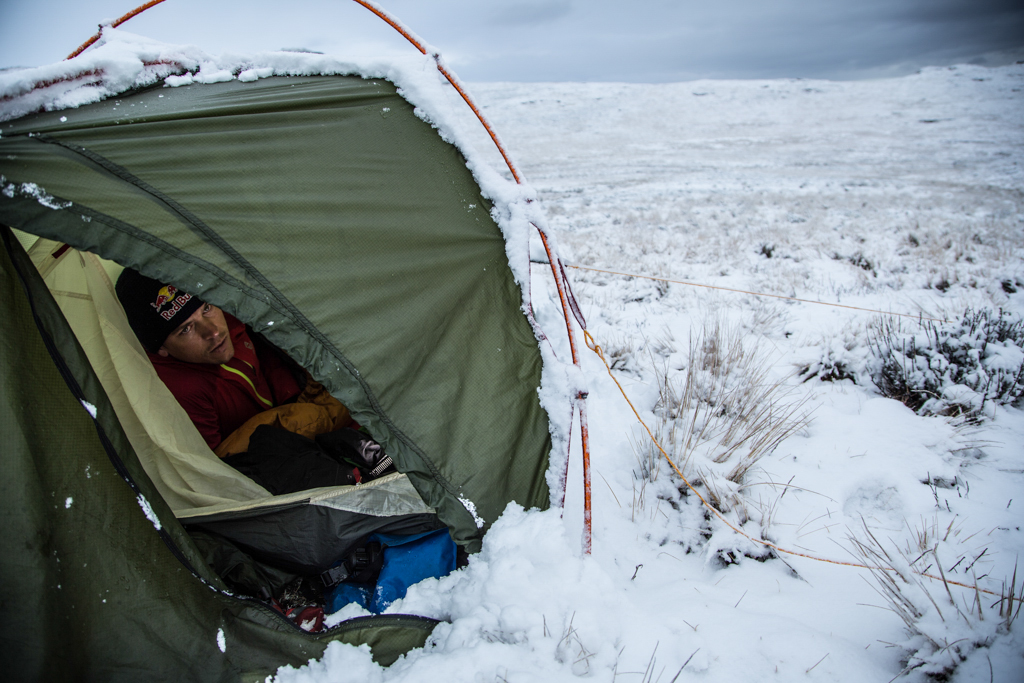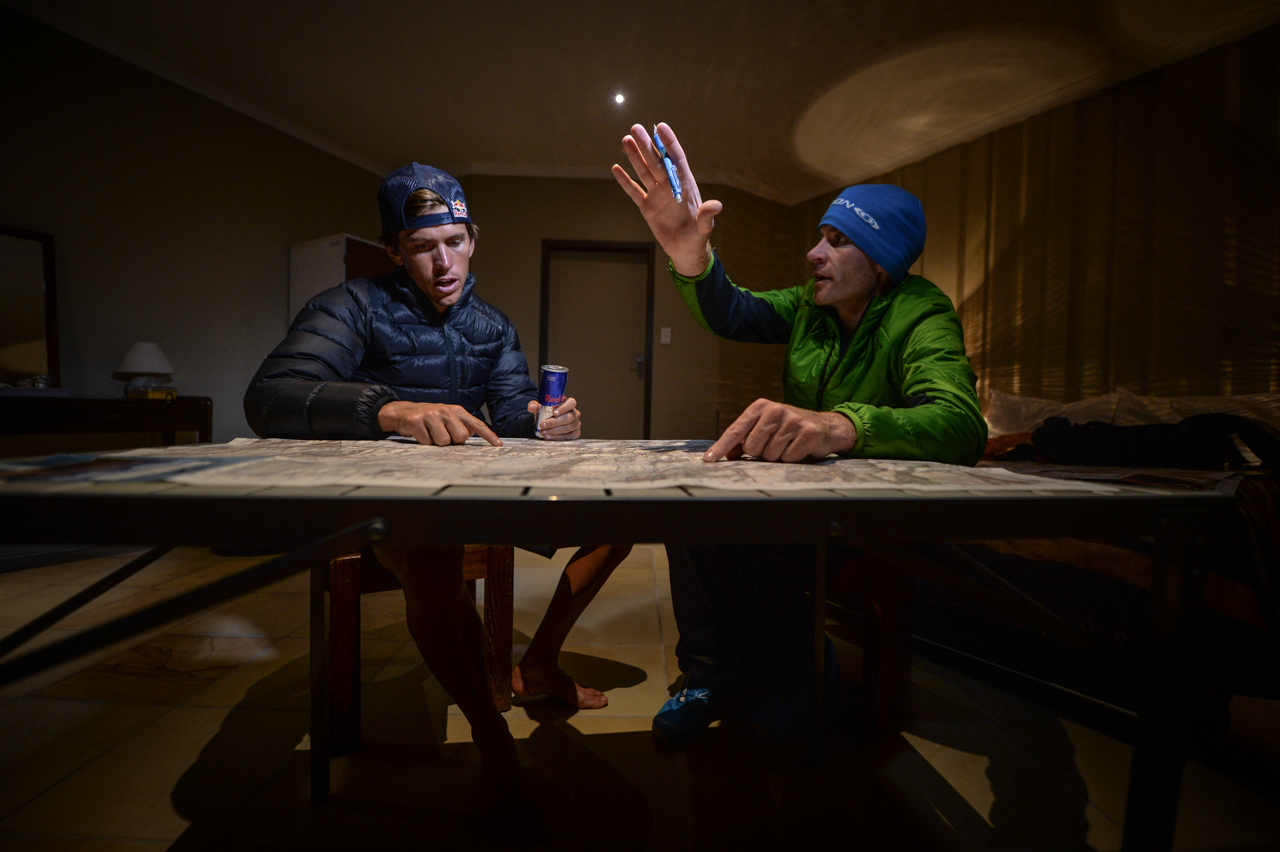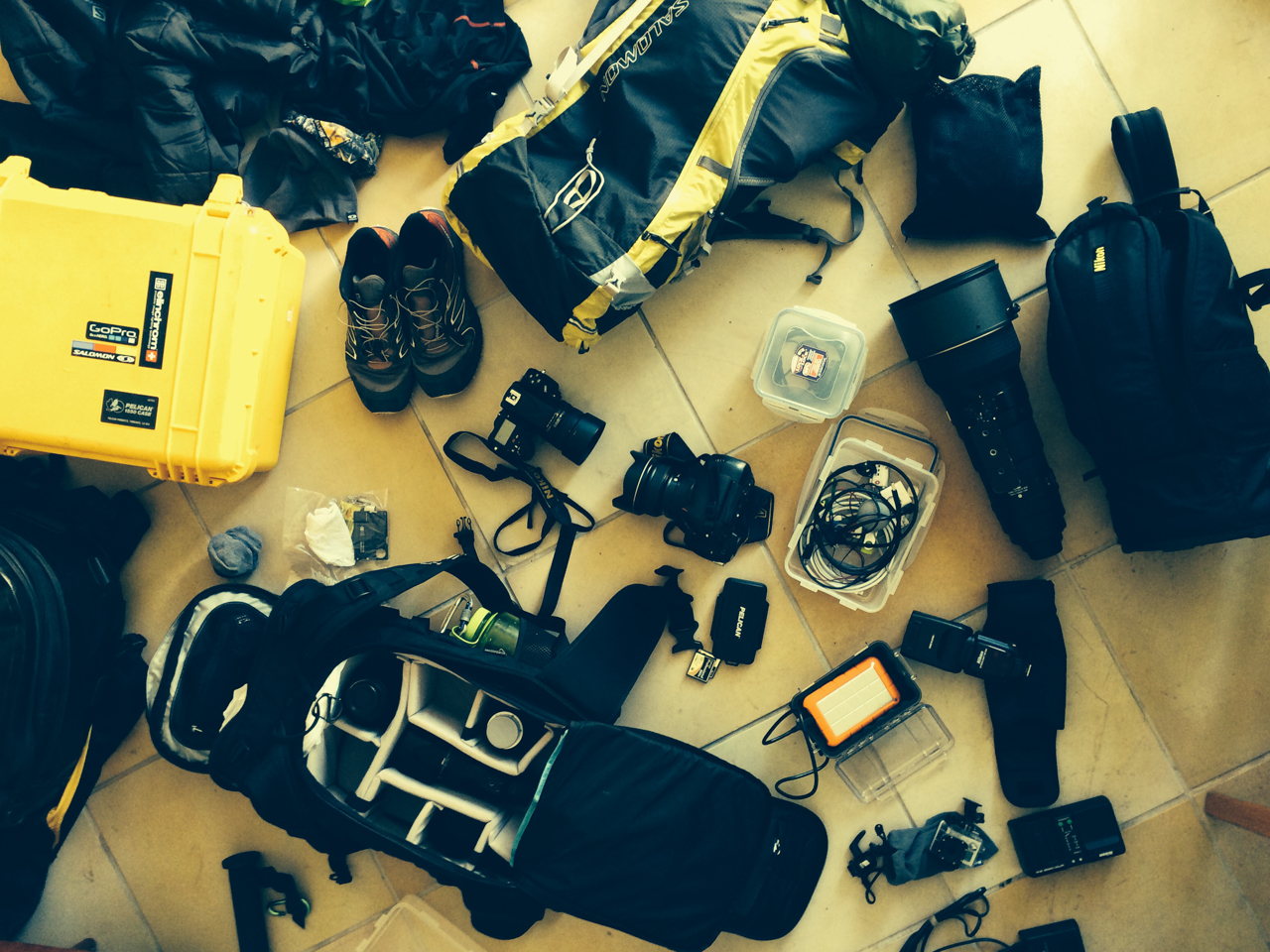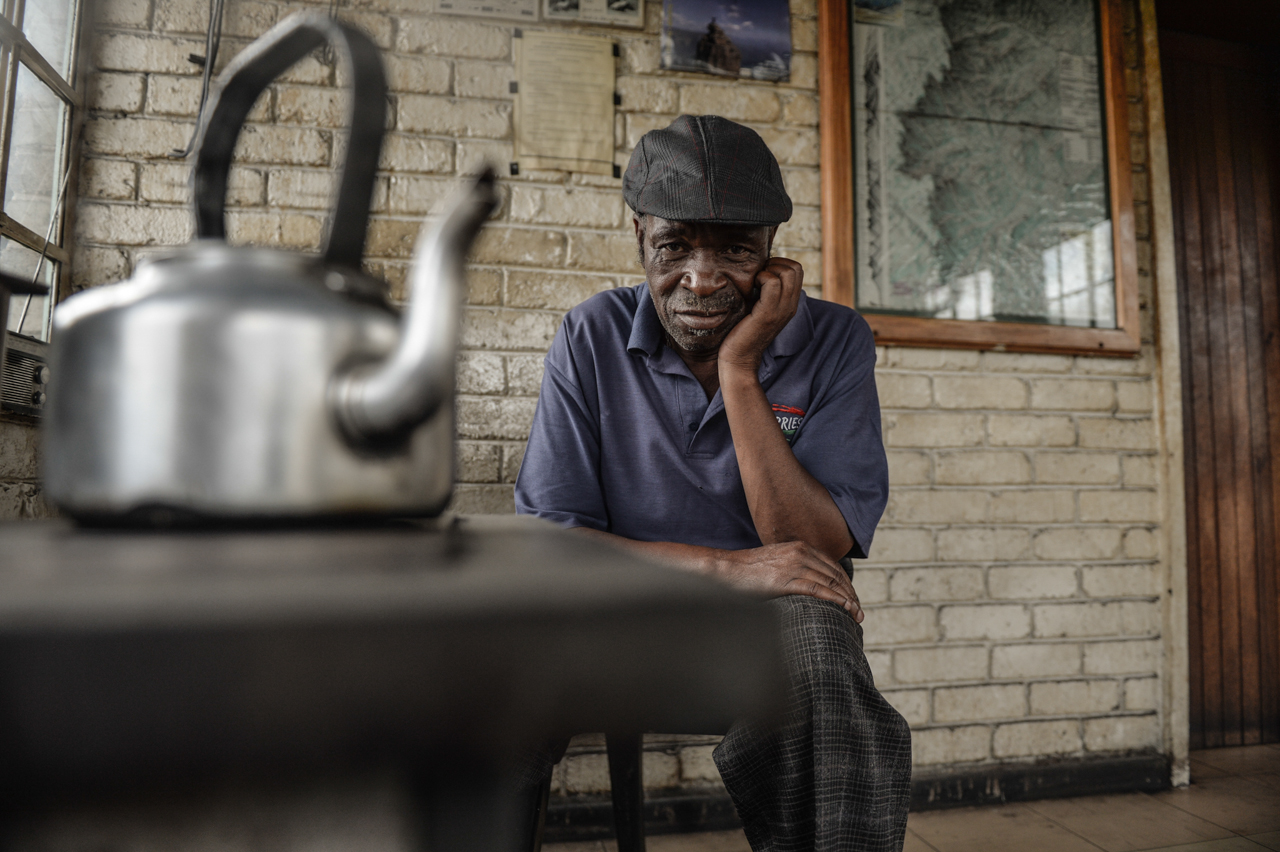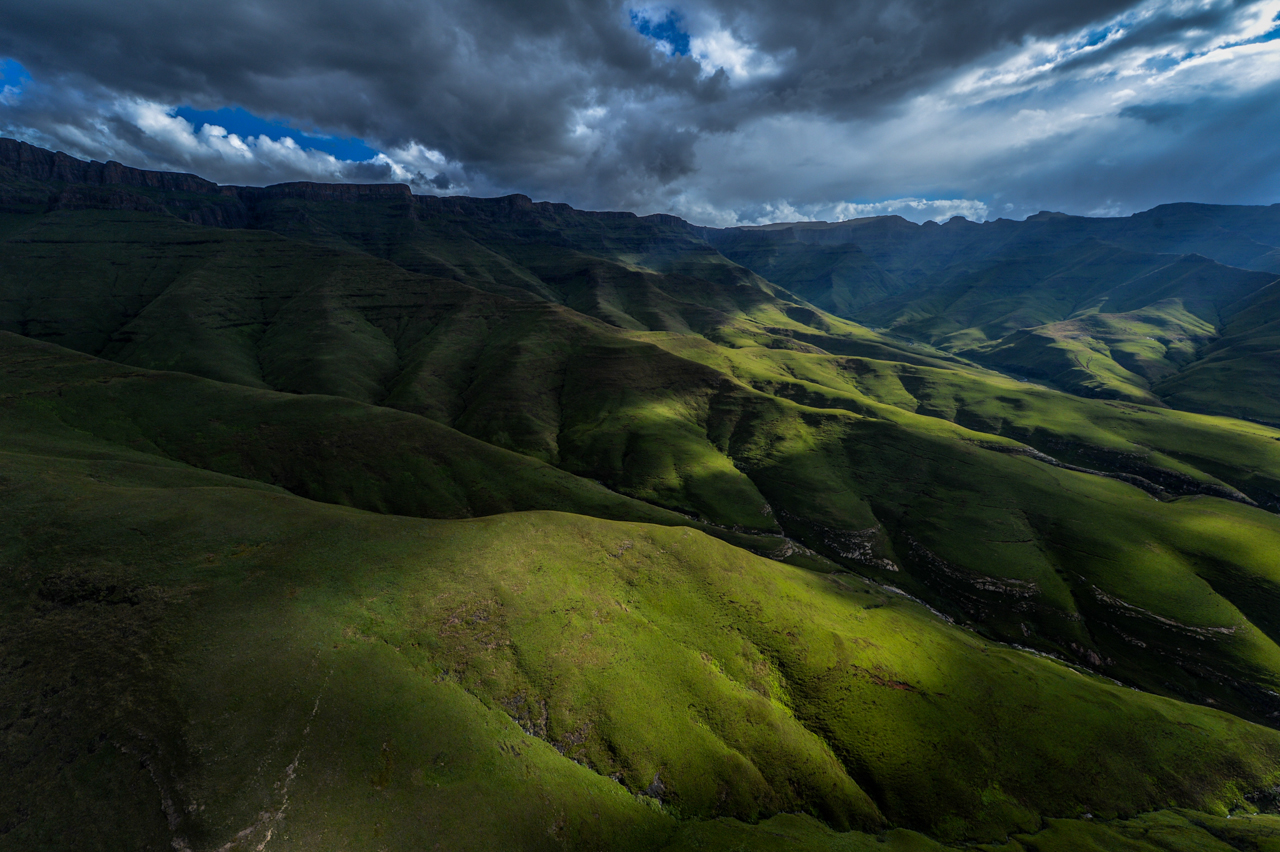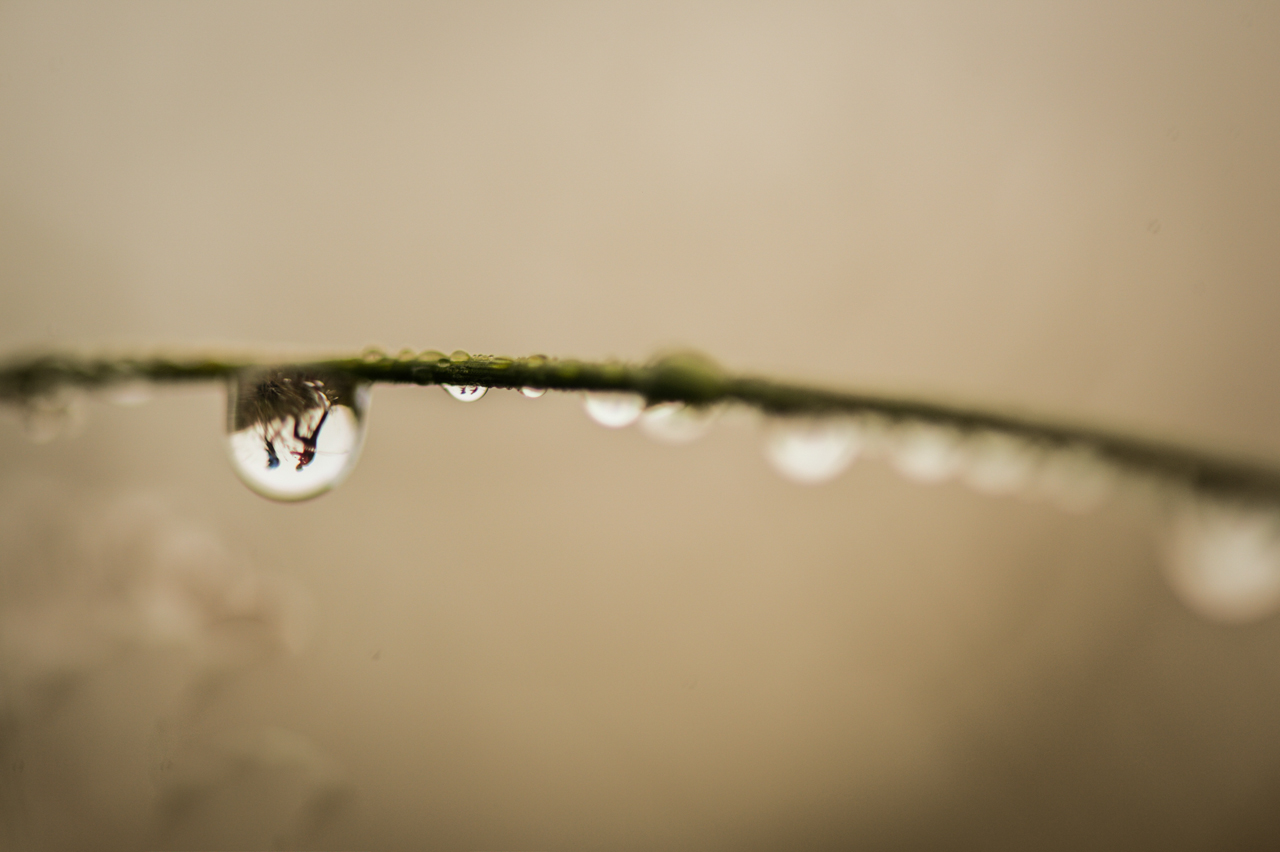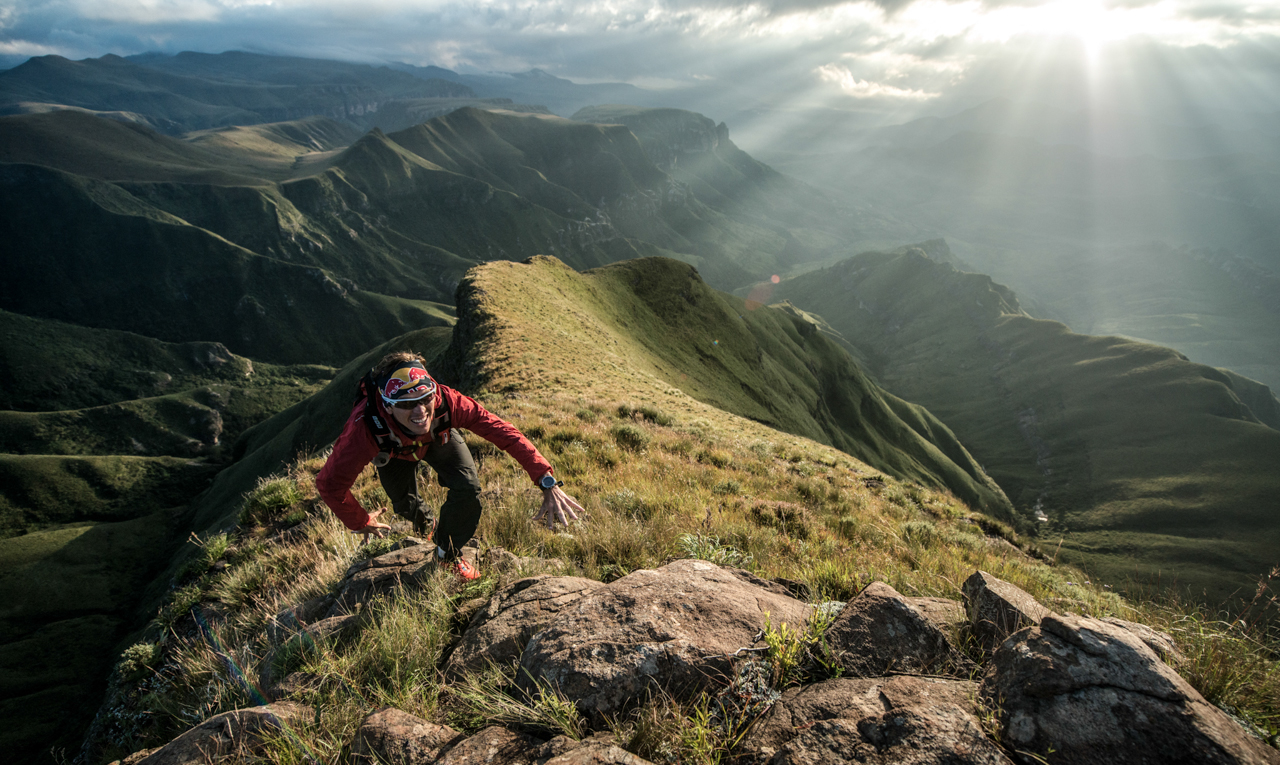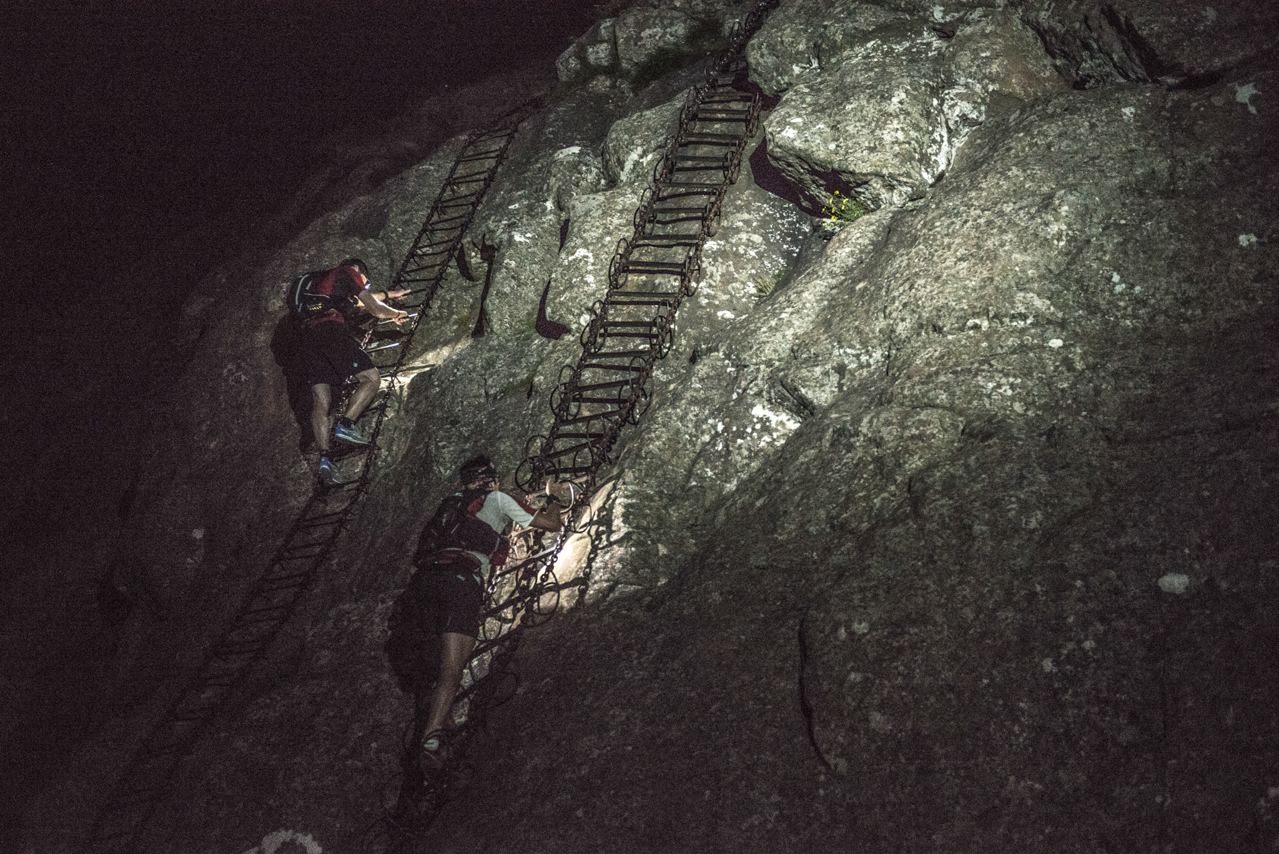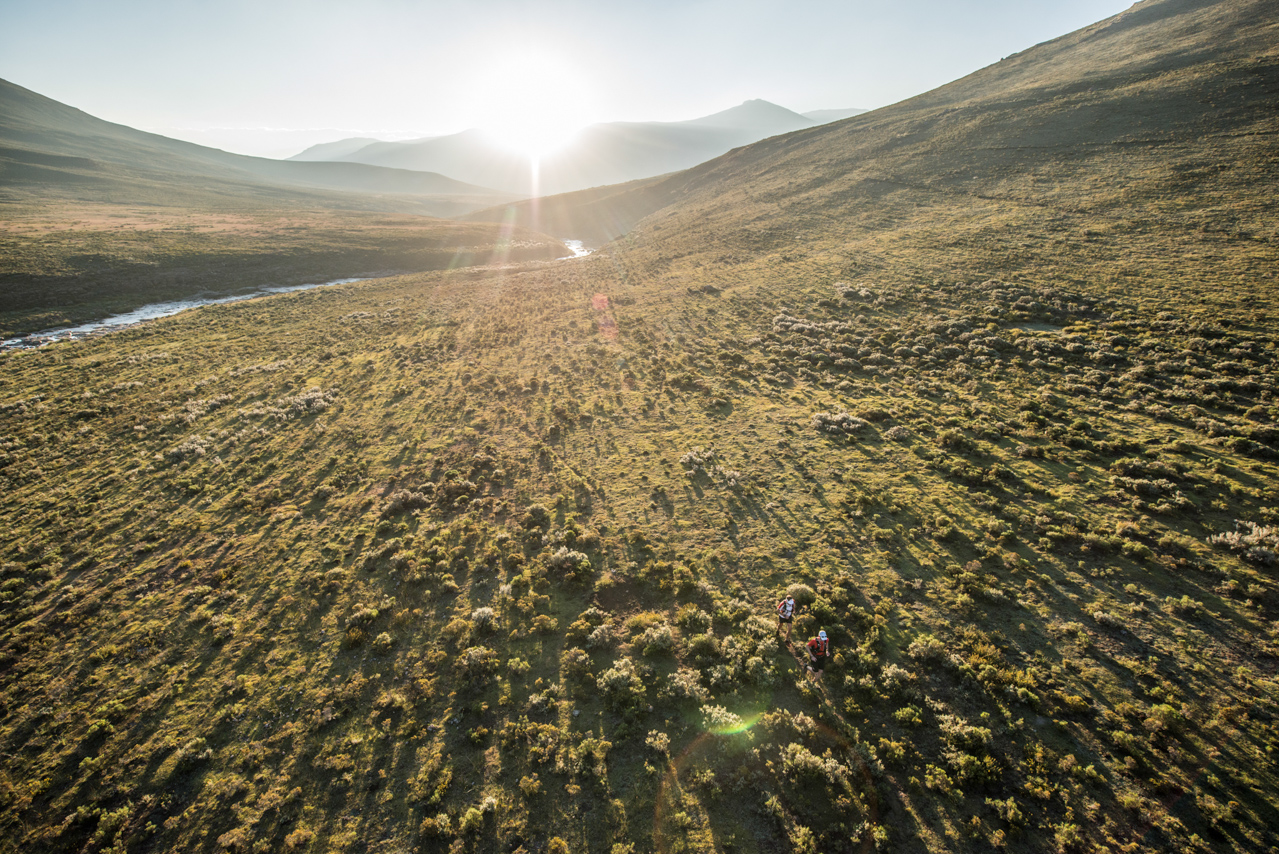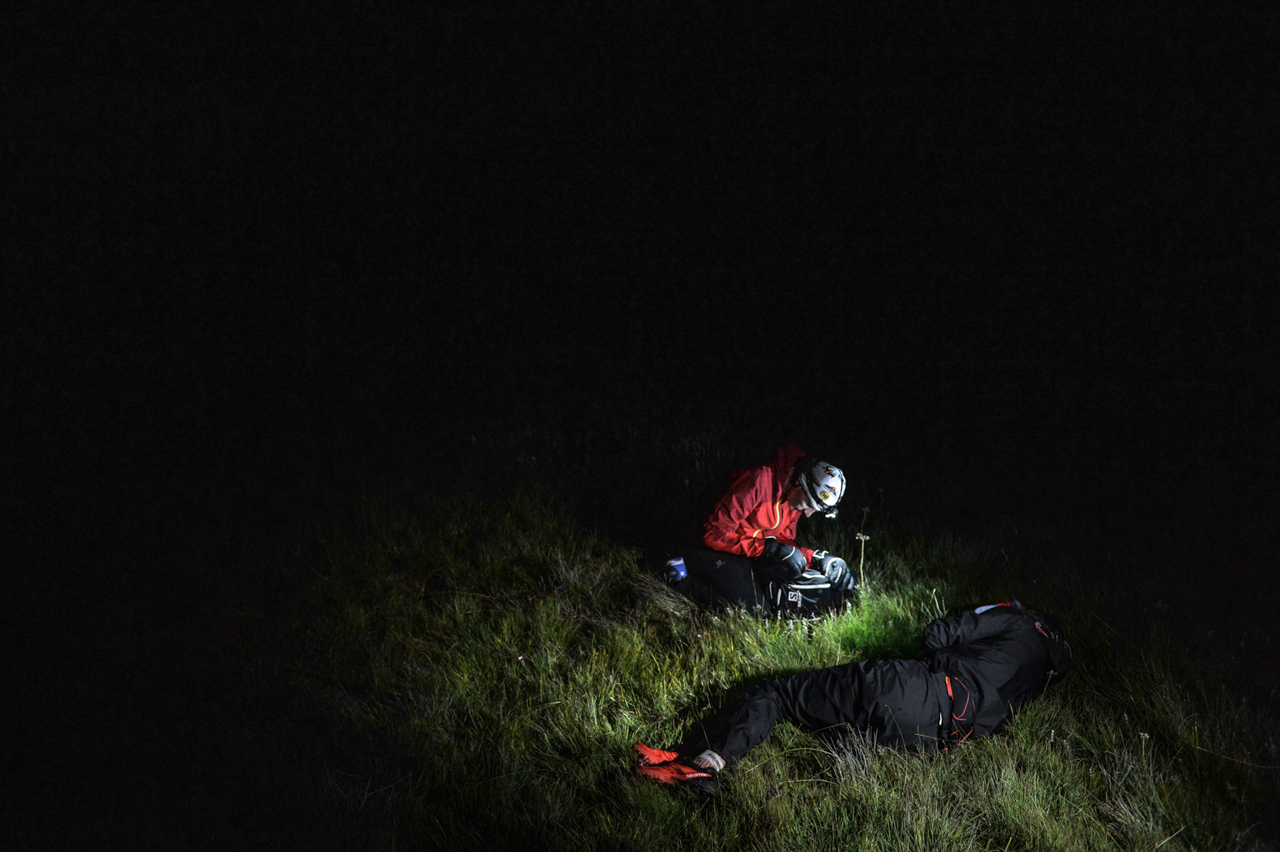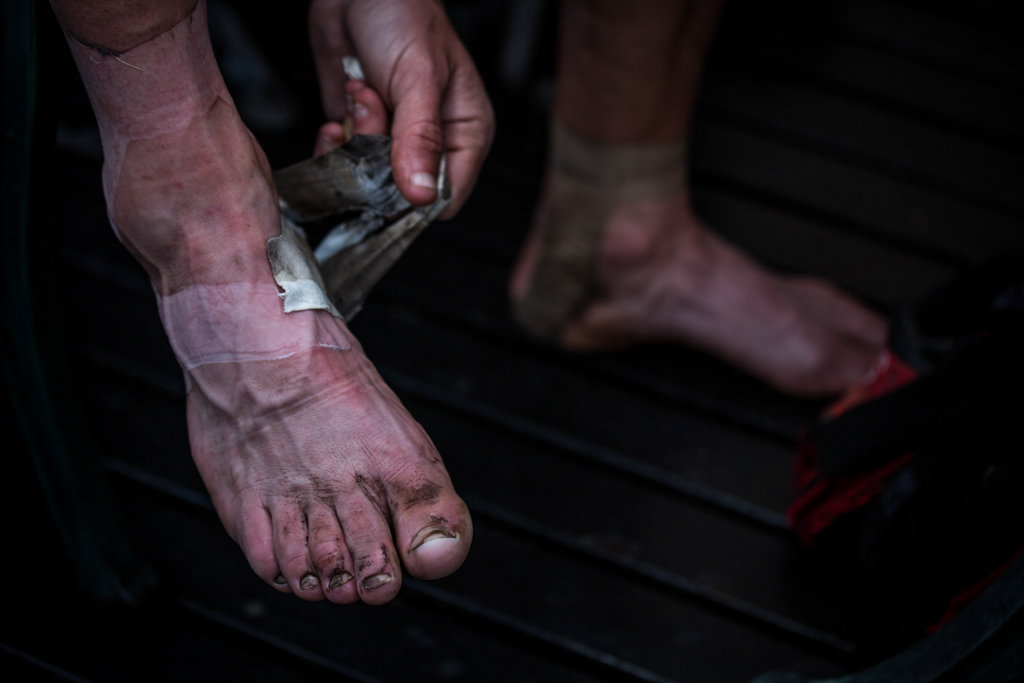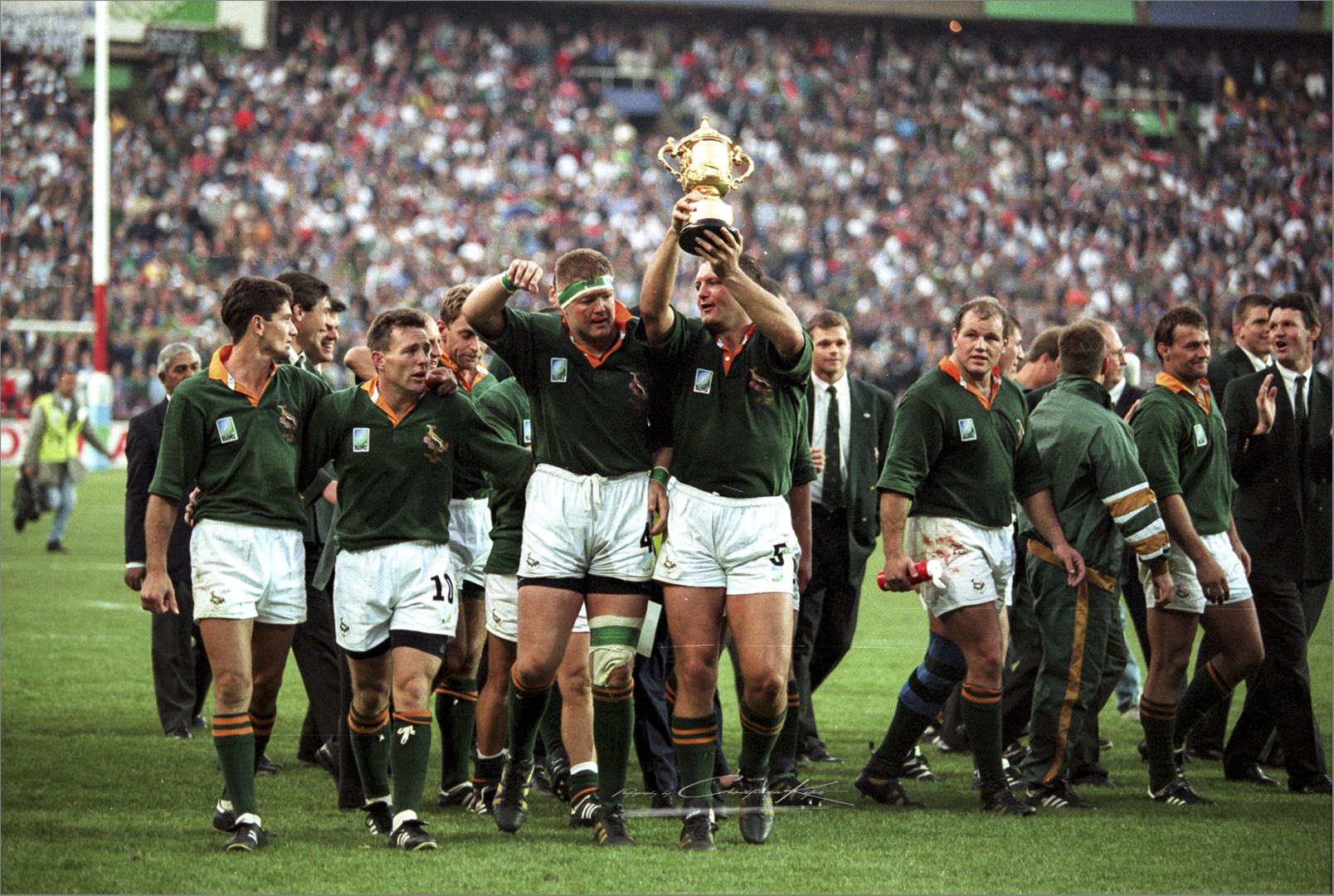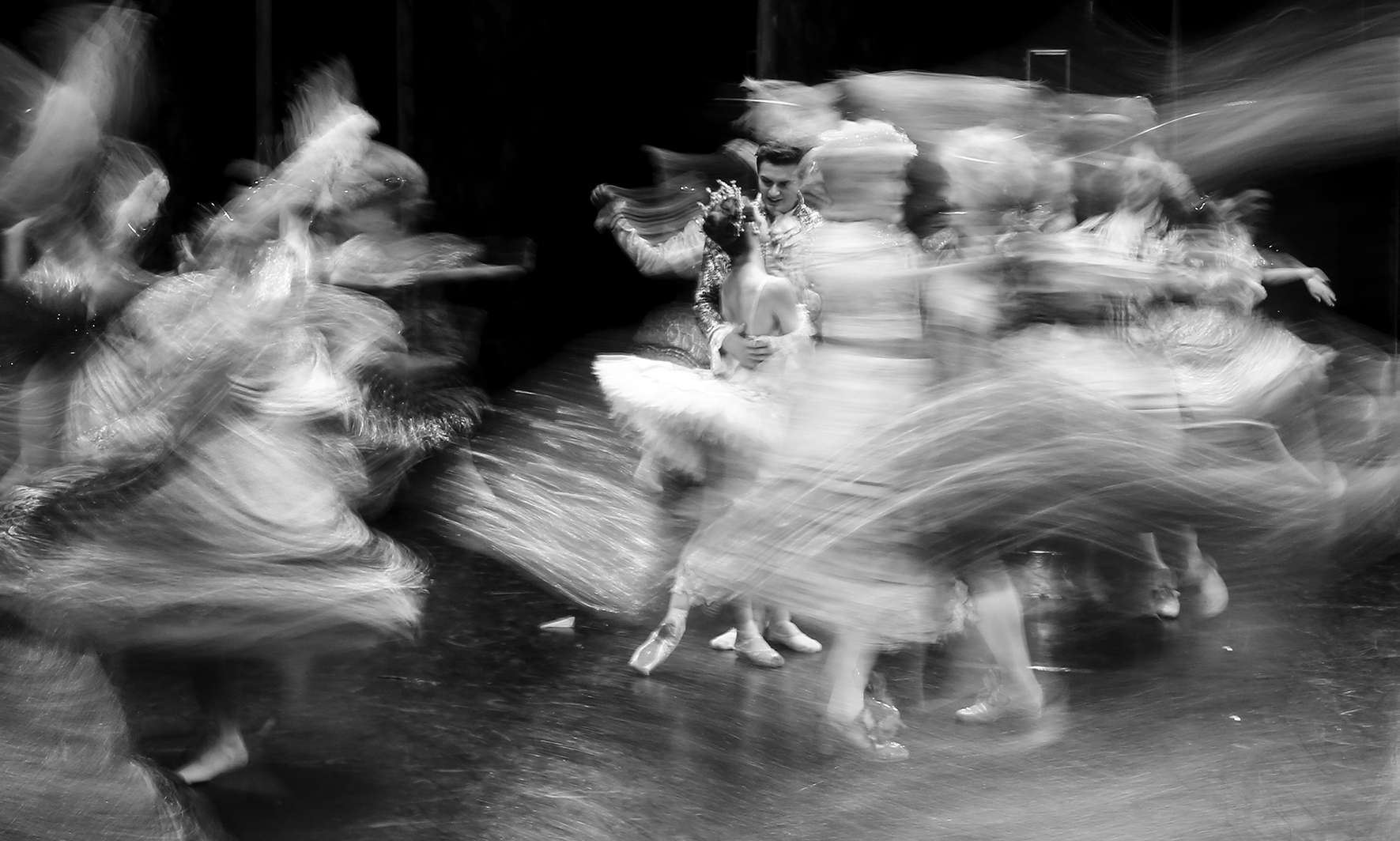Must see: Photographer Kelvin Trautman shares his 12 best photos and stories from the recent Drakensberg Grand Traverse record attempt.
Late last month, trail running athletes Ryan Sandes and Ryno Griesel ran 215km across the top of the Drakensberg mountain range in a staggeringly fast time of 41 hours. In doing so they broke the previous Drakensberg Grand Traverse record by 18 hours. A truly remarkable athletic feat that defies belief really. Enter Kelvin Trautman, a specialist adventure sport photographer whose job it was to relate to the layman at home the enormity of what Ryan and Ryno achieved.
We sat down with Kelvin to discuss the best way to showcase the story and photos from a photographer’s perspective, and Kelvin suggested that we feature his 12 favourite photos, along with detailed captions that give insight into what it took to document the record attempt:
Freezing. In October last year, Ryan, Ryno, Cobus (previous holder of the Drak Traverse record) and myself spent 3 days recceing some of the route. On our first night on top of the escarpment we had almost a foot of snow. With limited backpack space due to all the camera gear I was carrying I had very few warm clothing items. Lets just say that Ryan and I did some good tent bonding over those few days.
Since most of the Drak Traverse route does not follow a defined trail the route navigation prep was a key area to focus on. Ryno has spent the last 6 years honing, optimizing and recceing the route. After they broke the record, Ryno remarked “it’s the hard earned time in the mountains that makes breaking this record so gratifying”.
The Team. It took five months of route recce’s, team meetings, hours pouring over maps, back and forth with permit offices, to collate a 45 page production booklet that mapped out, in theory, how we (The African Attachment film crew, the logistics crew, the communication team, and myself) were to cover and publicize the landscape, the athletes (Ryan Sandes and Ryno Griesel), the emotion and athletic achievement of the Drak Traverse – I say theory because as with any shoot in the mountains, mother nature often throws your seemingly faultless shoot plan out the window within a couple hours.
What gear did I take with me? Given that I was tasked with shooting out of a helicopter and on foot I divvied my gear into two bags. A helicopter bag and a running bag. The helicopter bag obviously contained a much wider array of gear when compared to the much lighter, slimmed down running pack.
However, given that there was a very real chance of being stranded on top of the mountain due to fickle weather, there were a few non-negotiable items I packed in both bags.
- A headlamp torch
- A small multi tool/penknife
- A space blanket
- A bivvy bag
- A GPS with extra batteries
- A satellite phone
- Waterproof shell (top and bottom)
- Thermals
- Gloves
- Salomon Mantra running shoes
- A handful of snacks and Llama bars
The helicopter bag included the following:
- Lowepro Rover Pro 45L backpack
- Nikon D4 and Nikon D800 camera bodies
- Nikon 400mm, 70-20mm, 105mm macro, 24-70mm, 50mm, 14-24mm, and 16mm fisheye lenses
- A Manfrotto monopod
- Two spare camera batteries per body
- Four Lexar 32GB 800x CF cards and four Lexar 32GB SD memory cards
- A couple Hoya filters, namely a 77mm ND4, and variable density
- A MicroPro LED LITEPANEL
The running bag included the following:
- Lowepro Rover Pro 35L backpack
- Nikon D610 camera body
- Nikon 70-200mm, 24-70mm, and 14-24mm lenses
- A couple spare camera batteries
- A Nikon SB-900 Speedlight plus a Pocket Wizard mini TT1 and Flex TT5 transmitter and transceiver
- Two Lexar 32GB 800x CF cards and two Lexar 32GB SD memory cards
Waiting for the kettle to boil. His job is to man the mountain hut at the trail-head up to the Amphitheatre (also the starting point of the Drak Traverse route). He has been stationed in this one room hut for 22 years, working week long shifts at a time, and drinking, by his own admission, up to 10 cups of tea a day.
A place of such wild beauty that you can’t help but smile in wonder.
Framed by nature. On this morning I was hoping to shoot Ryan and Ryno being dwarfed by big mountain backdrops but unfortunately the mist rolled and reduced the visibility to a couple meters. Looking for alternate shots I took to shooting the runner’s reflections framed in dew-laden grass with my macro lens.
Often in a shoot brief a client will ask for hero shot. The splayed light, the exposed ridgeline, and Ryan’s clambering running pose all work really well to create this Hero Shot.
54 minutes after their midnight start time, Ryan and Ryno climb the 20m near vertical chain ladders and in doing so are on top of the Drakensberg escarpment – a place they would be for the next 40 hours or 202km.
Vast and uninhabited. Apart from a handful of Basotho sheep herders Ryan and Ryno ran 207kms without seeing any sign of civilization. Ed’s note: spot the runners towards the bottom of the frame, just right from the middle.
To break the Drak Traverse record, Ryan and Ryno had to realistically be able to run most of the route. On top of this they both decided that they would aim to sleep for only 1 hour during the attempt. Amazingly, in the end they slept for just 40 mins – on the ground without any shelter.
Ryan inspects his mangled feet. When you have spent 41 hours running over uneven terrain it’s now wonder your feet look like this.
We’d like to thank Kelvin for sharing his photos and stories with us! For more of his work, visit his website, or follow him on Twitter. Kelvin will also be taking over our Instagram account for the next week, as he documents the joBerg2C cycling race.


